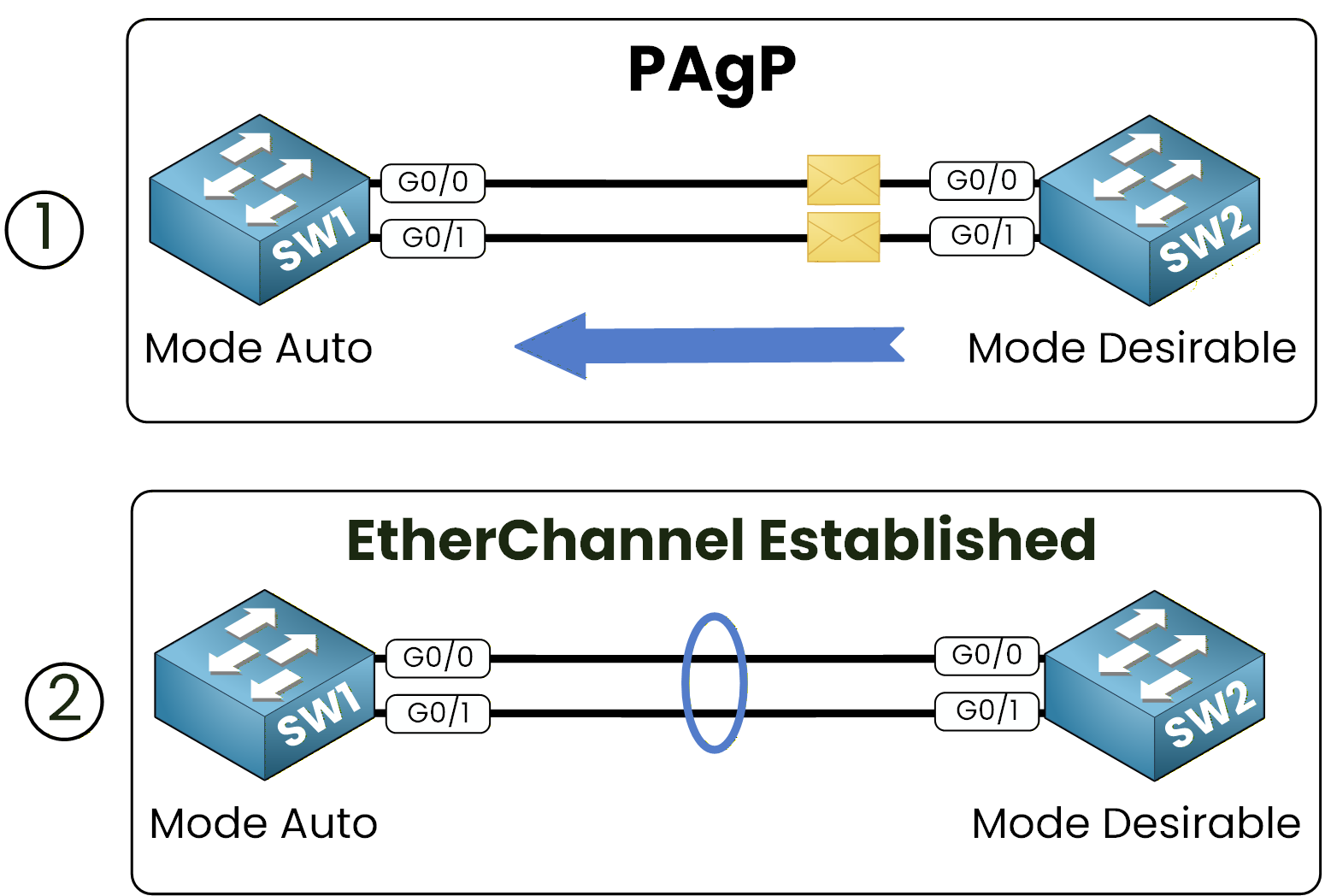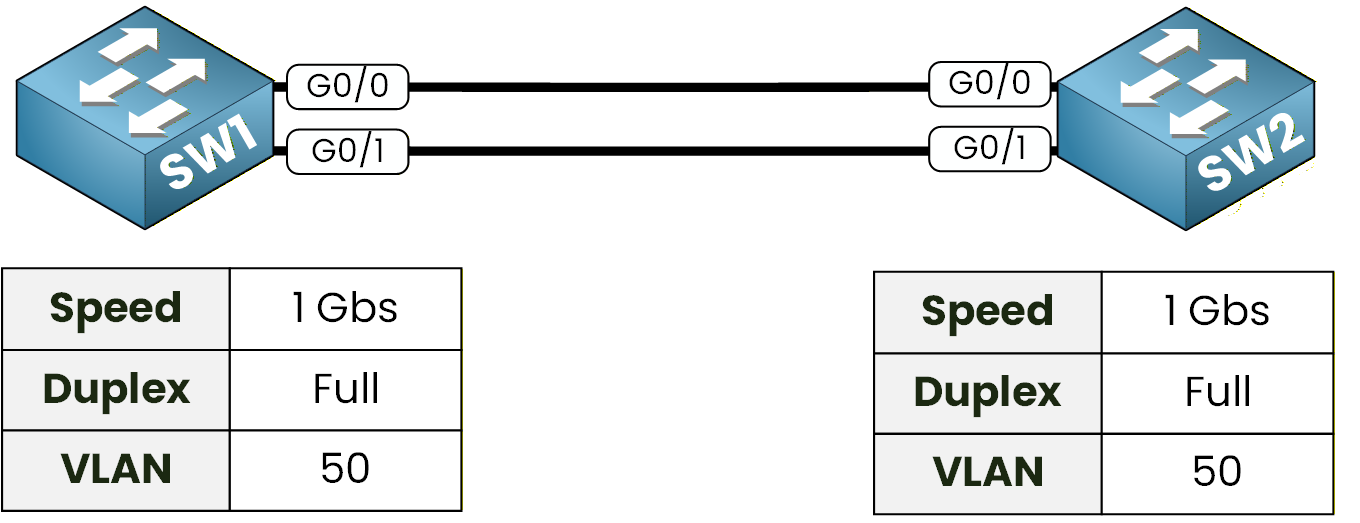Unlike LACP, which is an open standard, PAgP (Port Aggregation Protocol) is a Cisco proprietary protocol used for link aggregation.

Figure 1 – Introduction to PAgP (Port Aggregation Protocol)
Interfaces are dynamically grouped using desirable or auto modes. This configuration will also include setting up interfaces as trunks and allowing VLAN 50 on the trunk.
Prerequisites for Configuration
Before starting, ensure the following conditions are met:
Interface Consistency: All interfaces in the EtherChannel must have the same speed, duplex, and interface type.
VLAN and Trunking: For Layer 2 links, interfaces must be in the same VLAN or have identical trunk settings.
Active Links: Ensure that each physical link is operational.

Figure 2 – PAgP Configuration Prerequisites
For this configuration, we will use GigabitEthernet interfaces in full-duplex mode, and we will allow VLAN 50 on the trunk link.
Answer the question below
Here, we will configure EtherChannel using the Cisco-proprietary Port Aggregation Protocol (PAgP). This allows us to bundle multiple physical links between two switches into a single logical link to provide redundancy and increased bandwidth.
Afterward, we will configure the ports as trunks and ensure that VLAN 50 is allowed on the trunk.

Figure 3 – PAgP EtherChannel Configuration: Passive and Desirable Modes
Enter Interface Configuration Mode
Start by selecting the interfaces that will form the EtherChannel on both switches.
On SW1:
SW1(config)# interface range g0/0 - 1On SW2:
SW2(config)# interface range g0/0 - 1Set PAgP Mode
Next, configure the PAgP mode for each switch.
40 % Complete: you’re making great progress
Unlock the rest of this lesson
If you’d like to continue your CCNA journey, simply create your free account.
Access all CCNA lessons
Practice with hands-on labs
Train with Practice exams and Quizzes
Progress tracking in your dashboard
Made by network engineers - CCNP certified
learners globally
PAgP EtherChannel
PAgP is Cisco’s protocol for automatic EtherChannel negotiation. In this lesson, you’ll configure it step by step and see how Auto and Desirable modes form a trunk for VLAN 50.